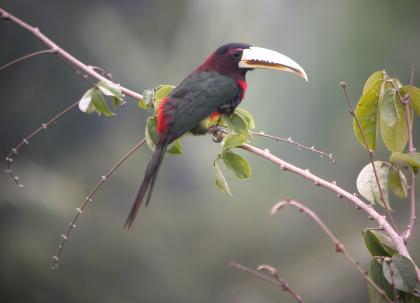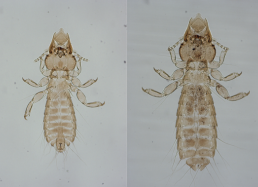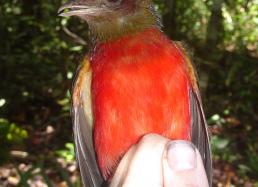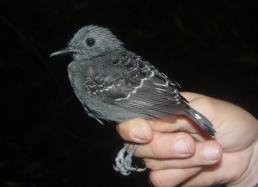Blog #10: What's Happened Since?
It has been a long time since the 2007 expedition—six years, to be precise. You’d think that we were all “done” studying specimens from these trips by now. But one of the fantastic things about collections like these is that they’ll continue to supply research materials for hundreds of years, and our work will continue to benefit from this trip for decades.
So, what have we done to study the specimens collected on that trip, and what have we learned about birds, parasites, and the biodiversity of the Rio Japurá region and the Amazon in general? Well, we and many others have done so much that it’s hard to write a short blog summarizing everything, so I’ll try to hit a few of the highpoints.
The Field and Goeldi Museum staff and students have used bird specimens from the Japurá expedition to publish several scientific papers and theses. In fact, several of Alex’s graduate student master’s theses and Ph.D. dissertations, as well as John’s graduate student’s Ph.D. dissertation, and several undergraduate student honors’ theses benefitted from specimens collected during this trip. (For profiles of many undergraduate research projects that have benefitted from our work on this expedition, check out our Undergraduate Interns page.) Because this was an region for which there were not many previous modern collections, we've provided tissue loans to colleagues who are also studying genetic structure in Amazonian birds.
One great example of this work is a paper that several of us coauthored in the scientific journal Molecular Phylogenetics and Evolution on the evolutionary history of Pteroglossus araçaris. This paper was based on Swati Patel’s senior thesis project at Northwestern University. After graduating, Swati went to Belem, Brazil, as a Fulbright Scholar in Alex’s lab at the Goeldi Museum. She is now in graduate school, working on her Ph.D. at University of California, Davis. For work on the parasites of Amazonian birds I have collaborated with Dr. Michel P. Valim from the Museu de Zoologia da Universidade de Sao Paulo (MZUSP). Prior to obtaining his postdoctoral position at MZUSP,
Michel himself spent a year at The Field Museum as a Brazilian National Science Foundation postdoctoral fellow, and we’re continuing to collaborate on papers and projects now that he’s back in Brazil. Together, we’ve described several new species of parasites, and even a new genus, and have published a number of papers on the parasites that we collected on the Japurá trip (see Photo #1 below.) The specimens from this expedition are also benefiting two recently funded National Science Foundation grants (NSF DEB-0515672, NSF DEB-01120054 and NSF Dimensions US-BIOTA-Sao Paulo-1241075). To see updates on our work funded by DEB-01120054, a project focused on studying the biodiversity of southern Amazonian birds and their parasites, check out our website: Southern Amazonian Birds and their Symbionts.
We also have many projects at various stages of completion, and some of these projects have important conservation implications for the birds of the Amazon. For example, a population genetics project on the Ivory-billed Araçari (Pteroglossus azara) confirms that the wedge of Terra Firme forest north of the Rio Japurá and south of the Rio Negro is biologically unique, and that for these (and several other birds), the Rio Japurá is an important barrier (see Photo #3 below.)
As it turns out, a number of birds in this “micro” area of endemism (now called the “Jaú” area), north of the Rio Japurá, are genetically different from their counterparts in the Napo and Imerí Areas of Endemism. So how does this impact conservation? Researchers, policymakers, and activists now have additional scientific data that confirms the importance of this area, allowing them to specifically target this newly identified pocket of diversity for protection from environmental threats. And safeguarding small areas that harbor unique diversity not only helps ensure the conservation of focal study species, such as the Araçaris but also other species that are likely to be unique in the same regions.
That’s one of the wonderful things about modern data-rich collections like those made during our 2007 Japura expedition—they’ll continue to provide critical scientific resources for both basic research and conservation of Amazonian birds far into the future.
So as you can see, places like The Field Museum and the Goeldi Museum play an invaluable role in today’s world. Rather than simply being repositories for “dead animals”—they’re a scientifically living repository for documenting diversity and ensuring its continued survival well into the future.
Thanks for joining us on our expedition!
Jason







